|
You are currently
in the Archives section. Please be aware that some information and links
in the archived page may be outdated.
Click here
to return to the Archives' main page to see the list of archived articles.
|
A
R C H I V E S
P
R O F I L E
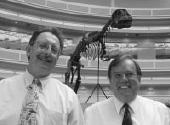 The
story could only make the seasoned airport operator smile. The
story could only make the seasoned airport operator smile.
Air Tran Airways, a subsidiary of Air Tran
Holdings, Inc., reported its highest April traffic in the company’s history.
Air Tran Airways’ traffic, measured by revenue
passenger miles (ROMs), increased by 22.6 percent for the month of April
2003 versus the prior year on 18.3 percent more capacity, measured by
available seat miles (ASMs), resulting in a load factor of 73.0 percent,
compared to 70.5 percent for April 2002. The airline enplaned a record
964,341 passenger in the month of April 2003, a 15.0 percent increase.
Atlanta Hartsfield International Airport
is building. Maybe the same thing is true and happening right now at the
airport near you. But if those AirTran numbers are any indication, the
airline business, on the mat for the better part of recent memory is finally
starting to show a pulse. It is a “new normal” pulse, heard beating during
the long tailspin which has enveloped the industry since September 11,
2001.
One month is not history, but Atlanta is
like no other place.
Delta Airlines, which by any measure is
the richest of the “big and beleaguered” U.S. carriers right now, calls
Atlanta home and heaven. With Georgia on its mind, it has people working
around the clock to reverse the big carrier’s current fortunes.
Delta does not like losses. In fact the
word to describe this company is ‘apoplectic’ with the kind of red ink
it has generated.
Into the black, from out of the blue, Air
Tran may not be every airline, but for crying out loud, how far back would
you like to see an airline recover, from the trials and tragedy and struggle
into the air of the post 9/11 commercial aviation business?
Air Tran has turned itself into a success.
Maybe the signal is good for everybody.
At HAIA, the long corridors from the airplanes
and the shuttle trains are lined with works of art. You ride the moving
walkways and in the middle there is the most comprehensive stone and marble
sculpture exhibit from Africa.
You pause to catch your breath, and there
is a see through glass case with multi-media art tracing 20th Century
evolution by the decades, including 50’s era radios waffle irons and television
sets.
In one area, you look through a glass wall
and imagine being in a typical living room, where Lucy and Ricky might
be jabbering with Fred and Ethel.
In another display, a squad of school kids
has put paint to paper in an impression of world brotherhood.
Most always, the rush through any airport
elicits only exasperation.
HAIA does a lot of business called “hubbing,”
which in bad weather, when flights get delayed, can also be defined as
a dead heat on a merry go round.
Surprise time to kill at HAIA can be relaxing,
enlightening and even uplifting.
Time for some of those biscuits and cream
gravy too, beneath a vaulted ceiling with milk glass skylight over a rotunda
area with open hallways arranged all around.
People in airport offices move about on
levels above, and look at people arriving, departing and gathering below.
In any transportation enterprise, rotundas
have always been the best.
The great train stations of the last century
and the truly great airport buildings have rotundas.
Rotundas are ingrained in the American experience,
because of the Capital Building in Washington D.C.
Rotundas in airports allow for sharing of
the experience of life while offering a genuine sense of place.
You simply cannot or should not run through
a rotunda.
In Washington, the business of government
is conducted on both sides of the middle, but people are just people in
the rotunda.
At Hartsfield, the rotunda is magical with
all the bells and whistles, usual suspects and one surprise.
A great big preserved real dinosaur artifact
is situate atop a marble platform.
“Somebody broke off the tail,” says Robert
Kennedy looking up at the ancient relic somewhat bemused.
You cannot think about a missing dinosaur
tail without wondering, “did this poor animal miss a flight” and “what
the hell did the thief do with the filched portion of the artifact?”
Robert Kennedy is director of Marketing,
Public Relations and Intergovernmental Affairs for Hartsfield Atlanta
International Airport.
Robert is responsible for the development
of new products and services, new passenger and air cargo routes, promotions,
governmental relations, and Airport communications.
Actually when he took up his most recent
post in 2002, the event marked his happy return to HAIA.
Prior to his return to Hartsfield, Mr. Kennedy
served as President of Kennedy & Associates - Aviation and Air Cargo Consulting,
LLC, based in Atlanta, Georgia.
He founded Kennedy & Associates to provide
airports, air carriers and aviation-related industries with in-depth analysis
and planning for route development, cargo master planning and air service
development, including bilateral air service agreements.
The first time around at HAIA, Mr. Kennedy
was the route development manager. In that capacity he launched global
marketing programs that expanded industry and corporate awareness of the
capabilities of the airport.
He was also involved in numerous discussions
and negotiations with most of the worlds major air carriers.
That Robert left one adventure at the airport
and was enticed back, can be viewed as an indication that at Hartsfield,
top management is paying attention.
Robert Kennedy is no slouch and definitely
not a career pencil pusher.
The guy is hot, with new and different ideas
and vision for 21st Century airports.
Robert Kennedy is one executive born to
fly, with a deep-dish air cargo background and a zest for life and discovery.
In a very short timeframe he imagined the
great Georgia aerial gateway as a must to fly to address, and then he
successfully developed several new airline services to Atlanta, including
the first direct all-cargo service to Southeast Asia, the Netherlands,
and Latin America.
In addition, Mr. Kennedy has successfully
worked with federal agencies to acquire a United States Fish and Wildlife
port designation, the approval of cold treatment for fruits and vegetables
for Atlanta and a United States Department of Agriculture-Veterinary Service
equine importation designation.
“The HAIA development program is a ten-year
plan meant to meet and exceed growth expectation.”
Not since the 1950’s has Atlanta’s population
exploded like it did during the one-year period from April 2001 to April
2002, according to data released by the Atlanta Regional Commission last
year.
While metro Atlanta’s 10-county region encompassed
some 3.6 million residents throughout Cherokee, Clayton, Cobb, DeKalb,
Douglas, Fayette, Fulton, Gwinnett, Henry and Rockdale counties, more
than 8,900 people moved within the city limits of Atlanta.
“We must be prepared to handle the growth
that is projected in terms of passengers and (flight) operations,” explained
Dan Molloy, HAIA’s assistant general manager for planning, development
and environment.
Passenger projections from Hartsfield’s
Master Plan, which was completed in 1999, indicate passenger volume will
reach 115 million by 2015.
Hartsfield, it should be pointed out, was
the only “Top 10” U.S. airport to experience passenger growth in 2002
despite a downturn in passenger traffic experienced since September 11th.
Industry experts predict a strong return to air travel and new demand.
In fact, Hartsfield for the fourth consecutive
year is the world’s busiest passenger airport, more than 10 million passengers
ahead of its closest rival, Chicago O’Hare.
The city’s residential growth spurt, projected
vehicle traffic growth and the anticipated return of passenger traffic
to the airport are all key reasons Hartsfield continues with its 10-year
expansion program known as The Hartsfield Development Program (HDP).
In fact, while gateway managers at other
world facilities are contemplating survival there still exists a palpable
sense of optimism at HAIA amongst the airport and carriers alike, that
very soon now the uptick as noted in those aforementioned AirTran figures
, will once again return to the entire airline industry.
With its varied components and wide-ranging
scope, the HDP can be likened to a far-reaching, multi-branched oak tree.
While the program will deliver enhancements
to the airport, it marks a new level of construction development complexity
for Hartsfield.
Each of the major program elements encompasses
a myriad of massive projects.
On the fifth runway project alone, there
are approximately 170 sub-projects planned for execution.
“Hartsfield has not had a major construction
project other than the addition of the airport Atrium and construction
of Concourse E, in nearly 25 years.” According to Molloy, the airport
has existed in its current configuration since 1980.
While the construction of a fifth runway
at Hartsfield is one of the most talked about elements of the program,
the multi-faceted, multi-billion dollar program also includes the construction
of a consolidated rental car complex, improvements to the central passenger
terminal complex and an expansion to the new international terminal.
The 10/28 Structure, or Fifth Runway, program
has several major components including two land acquisition phases, relocation
of natural gas mains and power lines, various road relocation projects,
runway and taxiway paving and lighting projects, runway construction and
relocation of a Federal Aviation Administration control tower.
Unexpected conditions have presented unique
issues on the massive project. When work began on the runway trunk drainage
project in April of 2001, estimates indicated that solid rock capable
of supporting the box culvert and the embankment for the runway should
be located between 15 to 3 0 feet below ground.
However it was determined that several sections
of the work area contained weathered rock, a mixture of rock and sand
and not suitable as a foundation.
This project challenge required contractors
to drill two to three times deeper than originally estimated to find suitable
foundation conditions to install needed caissons.
Weather is yet another factor adding to
the complex nature of program construction. Last year, several late summer
rain storms returned the region’s water tables to near normal levels and
impacted construction activity on the 5th runway project. Most importantly
the heavy rains flooded equipment on the project work site.
When completed, HAIA’s fifth runway will
actually cross a main arterial highway with aircraft taking off and landing
above an active part of the interstate.
We wonder, if motorists might be a bit distracted,
when an A380 freighter lands above a family out for an adventure in their
Hummer.
Robert Kennedy laughs. He has thought of
this situation, as did the airport planners.
There will be a roadway tunnel or something,
we imagine. But for the curious and adventuresome there will also be an
interaction from the air quite unlike any other available in the world
“The intersection of runway and highway
will be visually separated, although upon approach, from a safe distance,
the action will be viewable from your car.”
The animation and sense of excitement as
Malloy and Kennedy speak is refreshing.
Here are not only doers, but also dreamers
who clearly are out to create the greatest airport in the world, and they
are proud to tell you all about it.
To meet the demand of international travelers,
HAIA has included blueprints for a new international terminal in its $5.4
billion expansion program.
The new East International Terminal (EIT)
will allow international customers to avoid the airport’s current baggage
re-check locations. “EIT adds a new front door on the east side for our
international passengers. They will not have to worry about re-checking
their luggage after going through Customs,” said Molloy.
Hartsfield will need to construct a new
air traffic control tower to provide a clear line of sight to the new
fifth runway.
HAIA’s existing tower will be removed and
the area it is vacating will be used in the expansion of the international
concourse.
We wonder what the new tower will appear
as, but whatever the plan is, right now is a closely held secret.
Even as the master planners of Hartsfield
Atlanta International Airport devised one of the world’s largest passenger
terminals, they provided flexibility for the movement of cargo in the
design, as well.
Hartsfield’s North and South Cargo Complexes
maintain independent refueling and support systems, which allow quick
turnaround for airport cargo operators.
Atlanta is closer to Chicago than New York,
Philadelphia, or Baltimore. More than 200 million people, 80% of U.S.
consumers, are within two hours’ flight time from Hartsfield, or one day’s
trucking by highway.
Hartsfield maintains more than 1.2 million
square feet of cargo handling space in the North, South and Midfield Cargo
Complexes. Each complex offers excellent dockside access to interstate
highways 75, 85, 285 and 20.
Hartsfield is the only airport in the Southeast
to be approved by the USDA to apply cold treatment, an environmentally
safe alternative to methyl bromide.
Hartsfield’s Perishables Complex features
on-site distribution and transport capabilities, USDA inspection services
and a USDA approved fumigation chamber.
Adjoining the airport is the 250-acre (100
hectare) Georgia Foreign Trade Zone, FTZ # 26, which facilitates trade
and increases the global competitiveness of companies doing business in
Georgia by reducing operating costs associated with international trade.
Hartsfield is designated as a U.S. Fish
& Wildlife Port of Entry.
Georgia’s 1,244 miles of interstate highways
have placed Atlanta and Hartsfield among the nation’s major trucking hubs.
More than 100 motor carriers provide expedited ground transportation for
air cargo shipments.
Hartsfield’s cargo services feature operations
by more than 100 licensed customs brokers and 200 domestic and international
freight forwarders.
Beyond conventional cargo facilities, Hartsfield
boasts several specialized handling facilities: the Hartsfield Atlanta
Perishables Complex and the Hartsfield Atlanta Equine complex.
At the Perishables Complex, any perishables,
from flowers to seafood to fresh fruits and vegetables, can be distributed
through Hartsfield.
The 42,000 square foot (3,780 square meter)
perishables complex has four massive cooling facilities featuring a full
range of temperatures: -5 degrees F (- 20 Degrees C), 34 degrees F (1
degree C), 42 degrees F (5.6 degrees C), and 55 degrees F (12.7 degrees
C).
Operations at the Perishables Complex include
receiving, storage, transportation and delivery; repacking and cooperage;
ice-making and supply; presentation for Federal Inspection Services; fumigation
and plant washing; packing, crating and general cargo handling; incineration
and/or destruction of USDA rejected shipments; and aircraft handling.
Next door to the Perishables Center is the
21,000 square foot (1,890 square meters) Hartsfield Atlanta Equine Complex
designed for the handling, inspection and processing of animals, from
a single thoroughbred to a full charter of livestock. The 78-stall facility
features: on-site USDA Veterinarian Services inspection; 24-hour on-call
veterinary service; disinfection and cleaning of stables and aircraft
in accordance with USDA regulations; weather-protected loading/unloading
area; holding, examination and bathing pens; etched floors to prevent
slippage; imported rubber matting in each stall; individual drainage for
each stall; and an automatic piped-mist insect control system in each
stall.

|
|
|
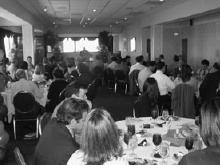
You
are not alone. As a matter of fact as Autumn 2003 begins, we are
thinking a couple of weeks by the lake would be just the thing.
A respite from the travails of business.
But alas, we dumped the cabin and
ceased being the folks who live on the hill, a long time ago. Also
somebody laid claim to the place we’d pitch our tent, so no luck
there.
But just when all hope is gone, air
cargo to the rescue.
We are preparing a new book titled
“Air Cargo An Illustrated History,” that will be out later this
year.
In it, our friends from all these
28 years at the keyboard, cranking out stories, will join their
more or less famous cousins in air cargo as we weave the story celebrating
100 years of aviation.
Thinking about the book, but more
about the need for a short break, we decided to create a 2003 picture
story in the style of our upcoming book.
“Atlanta in Black & White” is reality,
imitating fantasy.
You see, all our books are created
in black and white.
Color is reality.
Right now we think it’s all right
to step back a bit from that.
The people here are real, plus the
ATL encounter made us feel good.
We hope you enjoy the ride too.

Atlanta
Air Cargo Association was the venue for a noon-time address by Kirk
C. Kennedy. Pictured at the luncheon, (left to right) Kevin Madden,
Air Jamaica Account Executive, KBMaglobal@aol.com, Kirk C. Kennedy,Director
Cargo, 876-924-8848, kkennedy@airjamaica.com and “Cool Hand” Orville
Hart 305-526-2390.
It’s
an article of faith that no matter what else is happening, aircraft
will continue to land and take off, as business in some kind of
shape and form continues.
Atlanta Hartsfield International Airport
is a great North American gateway. The airport and the city it serves,
is so much more sophisticated and complete, that people who know
little of the place could ever guess.
The airport is really quite beautiful
and modern in every respect. Passenger amenities are striking, with
ample usage of empty places on walls and corridors for public displays
of sculpture and paintings.
It seems that everywhere you look
inside, while traveling through the place, there is art, either
generated by local school kids, up and coming Americans, or artists
from around the world.
One display of sculpture from Zimbabwe
located between two electronic moving walkways carrying people to
and from aircraft, is among the finest combinations of art, architecture
and public space on display at any airport on earth.
Here we preview some people and events
from our visit.
Atlanta Hartsfield, which is building
a fifth runway that will actually land aircraft over an interstate
highway has other great, dream-like plans that some day will include
even more space for air cargo.
But everywhere you go, people at this
gateway make it very clear that they, like everybody else, are concerned
and mindful of current world and national situation, but that they
will prevail in whatever the future brings.
The Atlanta Air Cargo Association
is a terrific organization that has been in business for many years
getting things done, while supporting the air cargo community and
raising money for hundreds of college kids to study transportation.
Monthly luncheons are well-subscribed
networkers’ delight, interesting and held atop a Marriott Hotel
overlooking the main runways at ATL.
The lunch by the way accompanied by
a healthy wedge of (what else) peach pie may be the best air cargo
club grub anywhere.
AACA guest speaker recently was Air
Jamaica director of cargo who outlined the carrier’s aggressive,
if somewhat grounded in reality, future program.
Mr. Kennedy who went to college in
New York at Pace University flew into Atlanta like a breath of fresh
air with exciting views of what lay ahead for the island nation’s
airline and the air cargo industry as well.
It’s probably axiomatic of the times
by Mr. Kennedy’s prepared remarks included some sobering thoughts
that airline consolidations are not over and that perhaps more challenges
will have to be overcome before the air cargo business returns to
anything like it was before 911.
“Air Jamaica is ready to forge partnerships
and alliances as it positions itself as a driving force in 21st
Century cargo, as gateway to the Caribbean and the rest of Central
America as well.
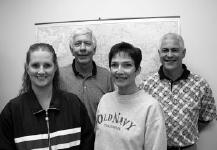
Nice looking
people and the determination to move the goods no matter how much
lift carriers like Lufthansa or anybody says they can’t provide,
is why the small to medium freight forwarder like Atlanta’s Southern
Export Services, left to right—Dari Lewellen, ocean export; John
Moore; Lorna Sabin, air export; and Charles Duchett, air export.
(404-763-4441 or jmoore@southernexport.com) will always be in business,
as both the heart and soul of air cargo. “If we get cut off anywhere
we find another way,” said John Moore, “Lufthansa is at times unresponsive
and unimpressive in service once they get the cargo, so we have
moved our consignments via truck and other carriers.” Mr. Moore,
who looks a little like baseball great, slugger Mickey Mantle speaks
in a measured, relaxed manner that delivers its grand slam service
edict in velvet tones. “We are here to deliver the best for our
shippers . . . period,” said John Moore.
 Hands
on, close to the customer, here for you, 24/7.” Dawn Griggs, district
manager, Air-Sea Forwarders, Inc. (404-763-2500, asfatlanta@aol.com)
has enough trouble keeping wannabe suitors at bay we imagine, let
alone having given out her personal cell number to every Air Sea
Forwarder account in Atlanta. Hands
on, close to the customer, here for you, 24/7.” Dawn Griggs, district
manager, Air-Sea Forwarders, Inc. (404-763-2500, asfatlanta@aol.com)
has enough trouble keeping wannabe suitors at bay we imagine, let
alone having given out her personal cell number to every Air Sea
Forwarder account in Atlanta.
But the pert and pretty air cargo
executive is part of a company with an above normal number of female
regional chief executives.
How did that happen in a male-dominated
air cargo business?
If Dawn is any indication, stand aside
Rhett.
Frankly my dear, Dawn Griggs does
give a damn.
That’s what we like about the south.
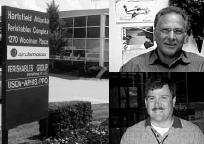
Once
upon a time, Perishables was what happened if the cargo sat around
long enough for the ice to melt. But, today the cool chain worldwide
is linked by the Atlanta Perishables Center with (top) Jose Ignacio
Gonzalez, President & CEO jgonzalez@atlantaperishables.com) (404-767-1700,
masterminding not only what is happening today but also what is
to be. An all pro-team, including (bottom) Tim Holt, operations
manager, brings several degrees of separation between the profit
and loss reports of a growing list of cargo carriers at ATL (Delta
is the biggest), that use the airport perishables operation to expand
their service package.
|
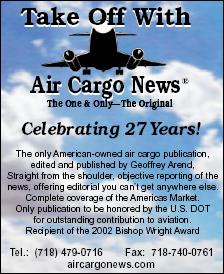
|


